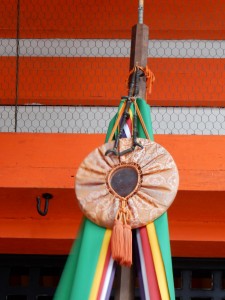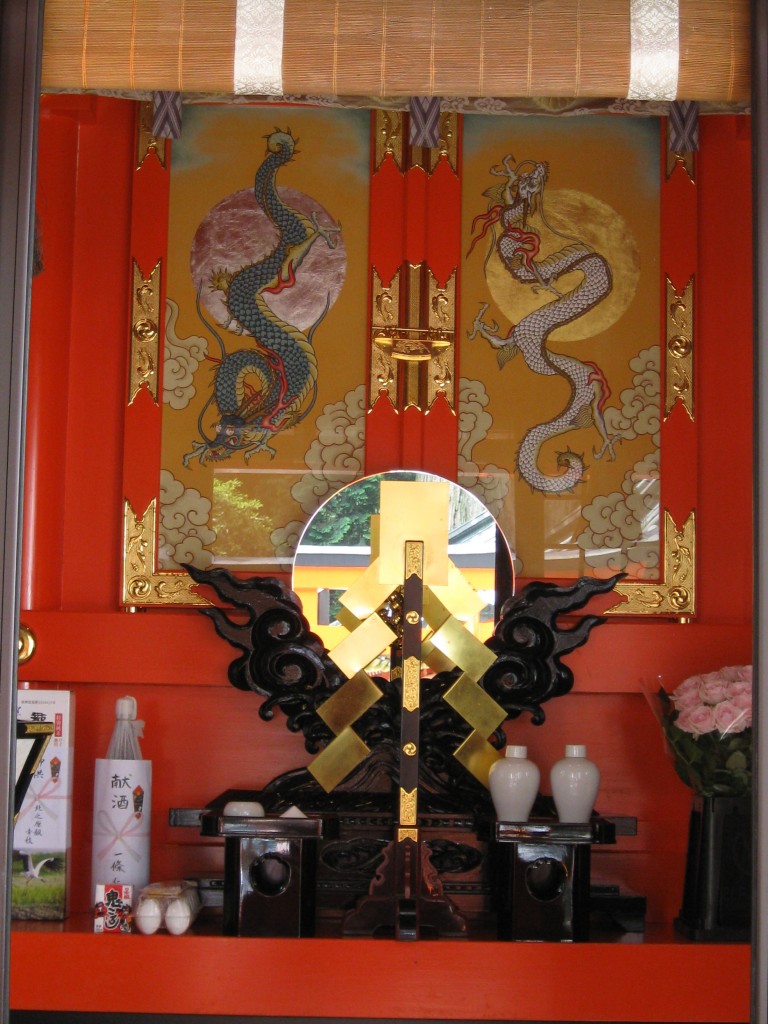Pine room and a secret jewel: Japan’s abdication rituals
Japan has waited more than two centuries for an emperor to abdicate, but the main ceremony to perform the ritual will take a mere 10 minutes.
The solemn rite will take place at precisely 5 p.m. on Tuesday [April 30] in the 370-square-meter Matsu-no-Ma (Room of Pine), considered the most elegant hall in the sumptuous imperial palace.
It is the only room with wooden floors — made from Japanese zelkova trees — rather than carpet, and the walls are covered with fabric featuring raised pine-leaf motifs.

Emperor Akihito will abdicate in the Room of Pine. Photo: POOL/AFP/File
The ceremony will be conducted in the presence of an ancient sword and jewel — part of the imperial regalia — considered crucial evidence of an emperor’s legitimacy. The sword and jewel will be brought in boxes into the room but a third element of the regalia, a sacred mirror, never leaves its sanctuary in the palace.
More than 300 people are expected to attend, including royals, government and parliament leaders, top judges, heads of local governments and their spouses. Around a dozen royals are due to be present.
Prime Minister Shinzo Abe will come forward and make a speech representing the people, before Akihito delivers his final official address as emperor. This is the last occasion the emperor will meet representatives of the people before he abdicates.
Technically, Akihito will remain emperor until the clock strikes midnight. Naruhito’s ascension to the Chrysanthemum Throne on the stroke of midnight on May 1 marks the start of his new imperial era, named Reiwa or “beautiful harmony”, to replace his father’s Heisei.
The initial set of enthronement ceremonies takes place in the same Matsu-no-Ma at 10:30 a.m. on May 1 and are also very short. During the first ceremony, the new emperor will inherit the sword, the jewel and the royal seals. Again, the sacred mirror remains in the sanctuary but this time, an envoy is sent to offer a ritual prayer before it. This represents the emperor “inheriting” the mirror.

The emperor flanked by a boxed sword on one side, and a boxed magatama jewel on the other. The mirror stays in the imperial sanctuary.
The emperor does not speak in this 10-minute ceremony, which is off-limits to female royals. Shortly afterwards, at 11:10 a.m., Naruhito will take part in another ceremony in which he will give his first speech as emperor. Again, Abe will speak on behalf of the people.
The new emperor will greet well-wishers from a glass-covered balcony on May 4 but is then likely to keep a low profile until the autumn. On Oct 22, he will formally proclaim the enthronement with 2,500 participants from Japan and abroad in an official ceremony, followed by a motorcade through central Tokyo.
In these spring ceremonies, male royals are expected to wear Western-style coats and the women full-length dresses. They will don traditional palace costumes for the autumn ceremonies and rites.
© 2019 AFP



